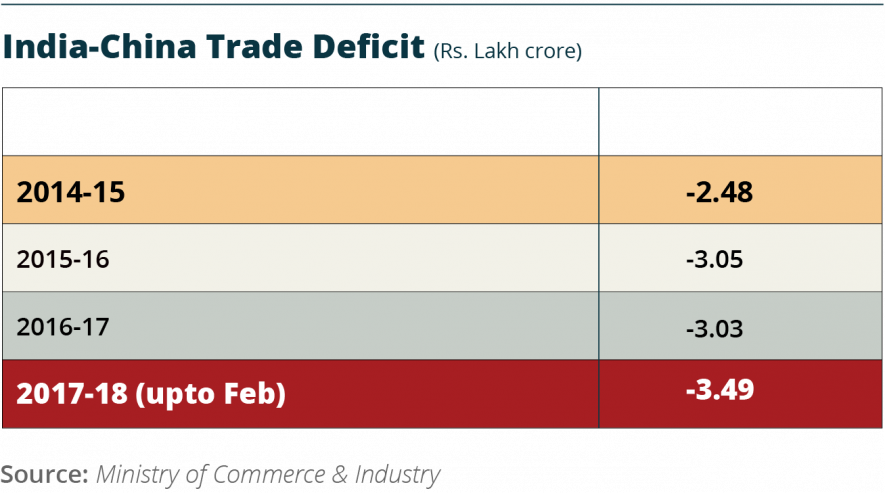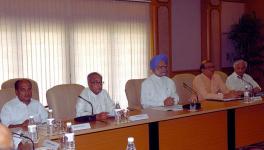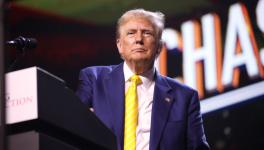What is PM Modi Seeking in China?

Prime Minister Narendra Modi is in China for a two day summit with Chinese President Xi Jinping. This is Modi’s fourth visit to China since he came to power in 2014. This time round they will be meeting in Wuhan, Hubei Province, located on the banks of the Yangtze River and famous for the place where, in 1966, 73-year old Chairman Mao Zedong swam across the mighty Yangtze River to the amazement of the world.
Modi’s current visit is being touted as involving an ‘informal’ and ‘free-flowing’ meeting with Xi although India’s National Security Adviser Ajit Doval and the external affairs minister Sushma Swaraj have preceded Modi in what must have been preparatory visits. Much is being made in Indian official circles of the fact that this meeting is being held halfway between New Delhi and Beijing, in some way indicating China’s need to accommodate India. This infantile notion is entertained by nobody except perhaps diehard Modi fans. More likely, it is Xi’s return gift to Modi –Xi was given an extended tour of Mahatma Gandhi’s Sabarmati Ashram near Ahmedabad in September 2014 when Xi visited India for his first and only visit. In return, Xi will give Modi a tour of Chairman Mao’s house (now a museum) in Wuhan.
But what exactly is Modi seeking in China? Why these repeated visits despite the notably xenophobic and even sinophobic stance of his followers and supporters in India? Global relations, strategic issues and even the border problems are all very well for international or domestic consumption. But both countries - India in particular - are seeking improvement in mutual trade. In this striving, Modi is all the more desperate because India’s economy is in doldrums and any export market for manufactured products and services, not raw materials, would be manna from heaven.
But first have a look at where India-China trade stands. Indian exports to China (including Hong Kong) have practically stagnated in these four years since Modi came to power, increasing by about 4.5%. Contrarily, Chinese imports to India have increased by nearly 27% in the same period.

The trade deficit (difference between exports and imports) between the two countries has widened to Rs.3.49 lakh crore in the current financial year, up from Rs.2.48 lakh crore in 2014-15. What does this mean? In simple terms, this means that Chinese goods are finding a market in India much more readily than Indian goods in China.

There are multiple reasons for this, the primary ones being the cheapness of Chinese goods, their range and the ability of Chinese manufacturers backed by their govt. to open trade channels worldwide. Indian manufactured goods on the other hand find very limited markets, except in some specific commodities like garments or gems and jewelry or leather products.
So, while China receives about 9% of India’s worldwide exports, India receives 19% of its imports from China in value terms. That is a huge imbalance – but that’s life in this globalized world.
In the context of the growing protectionism around the world, mostly sparked off by US President Trump’s efforts to raise import tariffs and generally disrupt global free trade, both China and India are worried. China more so, because it is still largely dependent on export earnings, although this is changing fast with domestic consumer spending rising in the past few years. Yet, it can ill afford to allow erosion of markets anywhere. So it keeps chipping away at India to increase its penetration in the Indian market, limited as it is.
India on the other hand has bumbled its way through a slew of efforts to boost exports, seeing it as the only way to get out of the endemic lack of demand domestically. GDP growth figures apart, India’s industrial production is stagnating as shown by its IIP over the past few years. So is employment – and hence demand. India is reliant on services exports for its meager export earnings. What India needs is some export boost to shore up its flagging economy, especially with crucial state elections this year and the Lok Sabha elections next year.
Hence Modi’s keenness on visiting China and, in the garb of discussing global strategic issues and welfare of mankind with another ancient civilization, trying to drum up some buyers for Indian goods. From all indications, this is a tough call. So, don’t be surprised if nothing comes out of this.
Get the latest reports & analysis with people's perspective on Protests, movements & deep analytical videos, discussions of the current affairs in your Telegram app. Subscribe to NewsClick's Telegram channel & get Real-Time updates on stories, as they get published on our website.
























